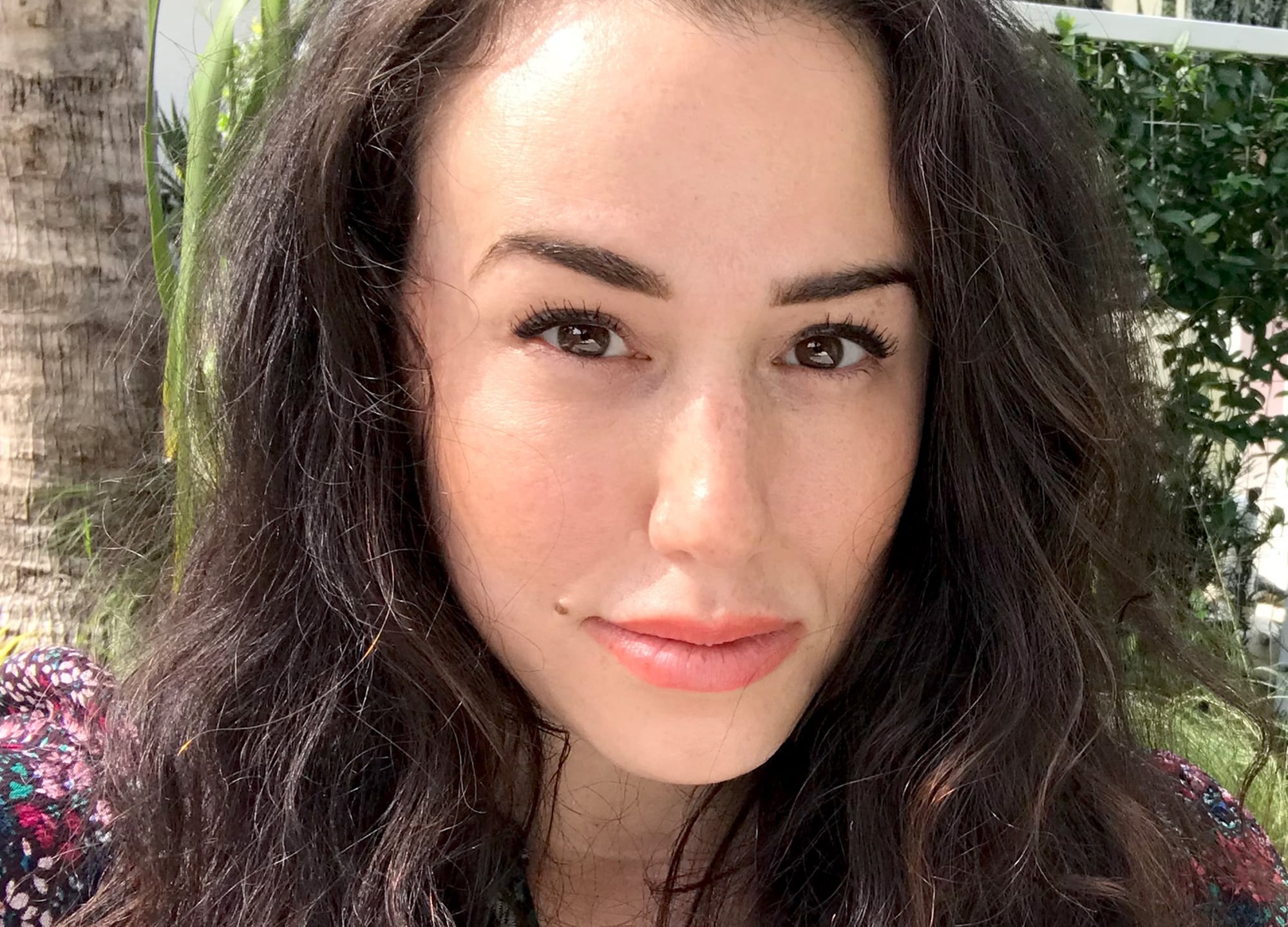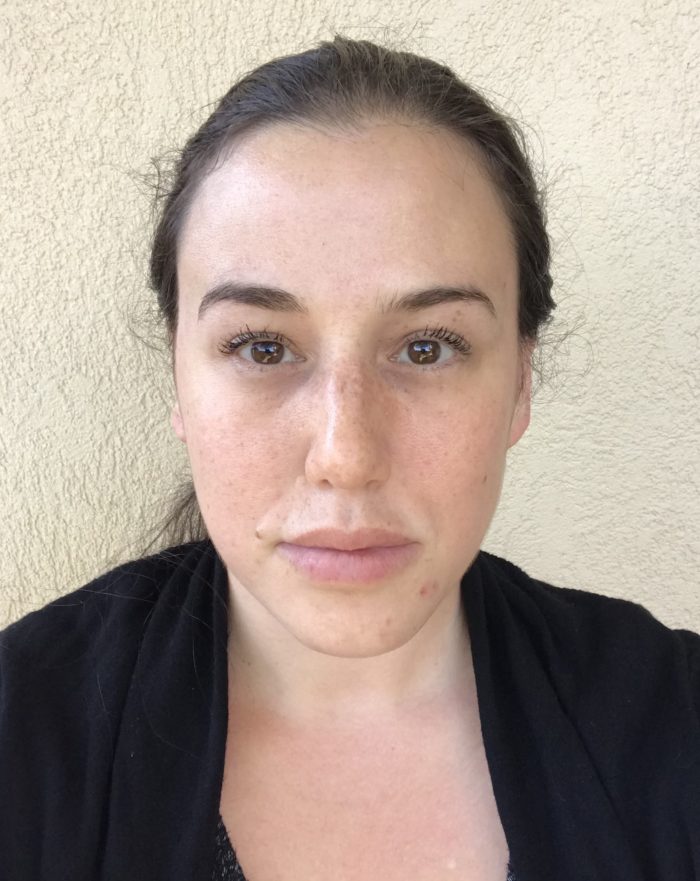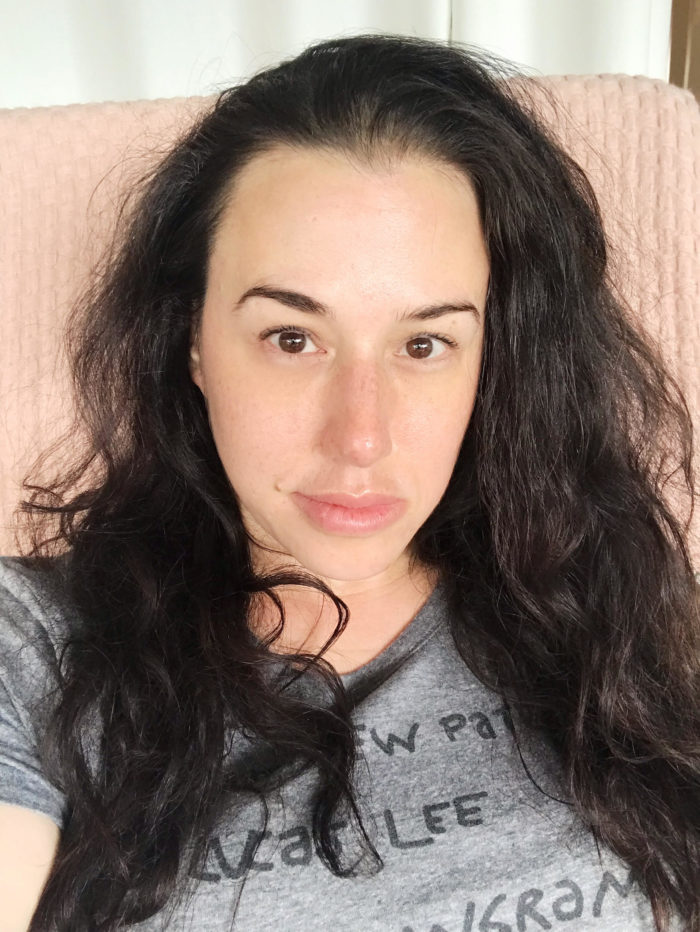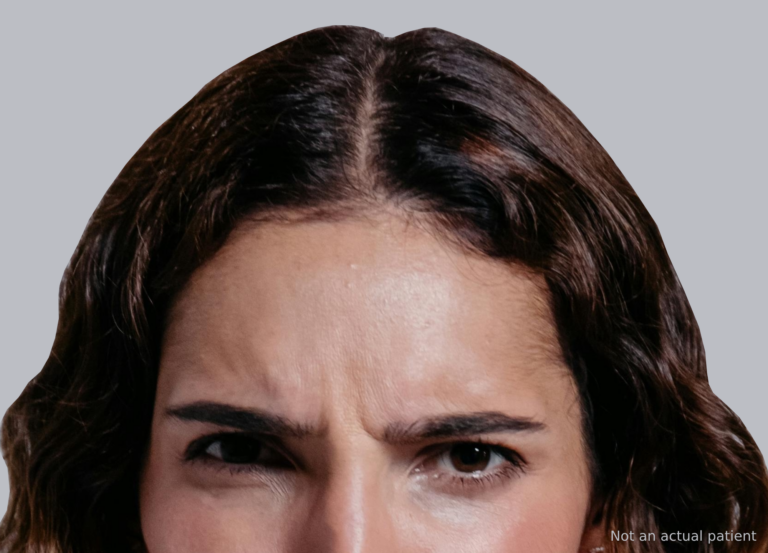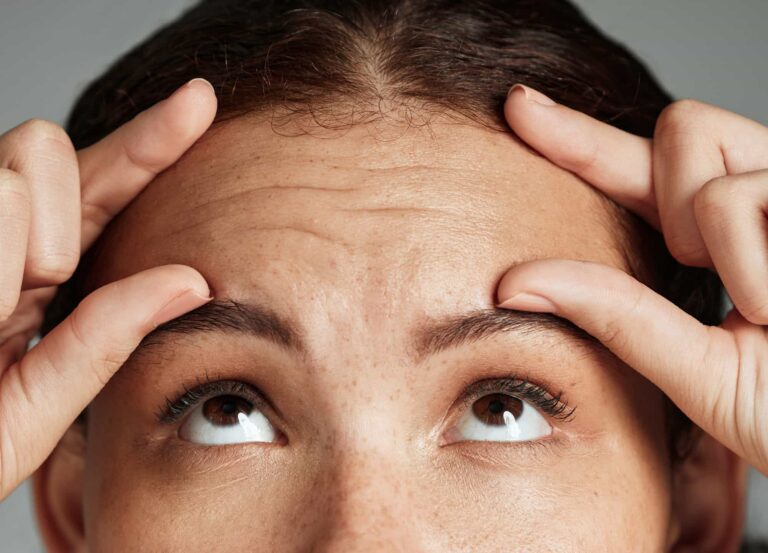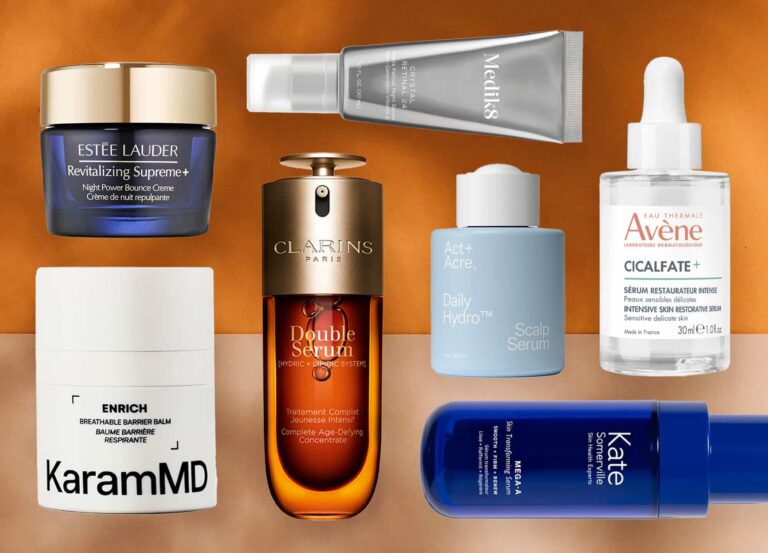The treatment I tried
My provider
West Palm Beach, Florida, dermatologist Dr. Supriya Tomar
Why I tried it
At the risk of seeming boastful, I can pass for younger than I am. When I tell people I’m 40, the most common reaction is an incredulous “You’re 40?! I thought you were—” and then some endearing number in the lower 30s (or even 20s, on an especially fresh-faced day). Even though there’s literally nothing wrong with being 40 or looking how people expect 40 to look, I get a kick out of being mistaken for someone who couldn’t possibly have a clear memory of the 1980s. And, if I’m being honest, I’d like to keep it that way.
Although I’ve gotten Botox injections in my forehead about once a year for the last few years, I haven’t been especially diligent about otherwise ensuring my face’s youthfulness. Beyond making smart over-the-counter skin-care choices, like formulas with retinol and vitamin C, I’ve more or less been flying by the seat of my pants—or rather, my genes. But even though I may look younger to those around me, I’ve definitely noticed a few changes in my skin that I’d like to stop in their tracks—and perhaps reverse instead of covering with foundation.
I was surprised when West Palm Beach, Florida, dermatologist, Dr. Supriya Tomar of Supriya Dermatology recommended that I start getting Fraxel once a year. One of the most widely known fractional lasers, Fraxel causes controlled micro injuries to the skin in order to treat sun damage, reduce wrinkles, and improve the appearance of acne scars. But while I had a few sunspots and a couple of barely there forehead lines, I thought Fraxel would be overkill for addressing these relatively minor complaints.
“It’s a good time to start doing things,” Dr. Tomar told me. “For all my patients I recommend, once you’re in your 40s, that you do this laser once a year. You’re going to mitigate the effects of aging. Every year, we’re losing about 1 percent collagen. So what it’s going to do is stimulate the collagen back for you.”
My concerns
In other words, Fraxel will help encourage collagen production in my skin, essentially staving off signs of aging instead of trying to reverse more significant symptoms of aging in the future. “If you were a bit older, [you would] need multiple treatments,” Dr. Tomar said. “At this point, in your 40s, just doing [it] once a year can maintain [your look] for the long run.”
But just because I don’t have much to correct doesn’t mean I wouldn’t see benefits from Fraxel right away. “Fraxel resurfaces your skin, so you get rid of the old skin and you get new skin in the area. New skin is healthier skin,” Dr. Tomar explained, noting that the type of Fraxel she’d be using on me, the Fraxel Dual, is actually a twofold laser that reaches two different depths within the skin. The lasers are non-ablative and they utilize different wavelengths to target different skin concerns: hyperpigmentation and wrinkles. “One wavelength is going to address the dermal layer and stimulate production of collagen and elastin in skin, which is going to reduce the appearance of fine lines and wrinkles.” says Dr. Tomar. “The second wavelength in Fraxel Dual treats discoloration and age spots and does superficial resurfacing and evens out the skin tone.”
In addition to Fraxel Dual, there are two other Fraxel options on the market: Fraxel Re:store and Fraxel Re:pair. Fraxel Re:store uses a non-ablative laser to target hyperpigmentation and fine lines deeper in the skin, without affecting the skin’s surface. Fraxel Re:pair, on the other hand, is the most aggressive of the three Fraxel options and uses an ablative laser to treat more severe sun damage and wrinkles. Fraxel Dual is the middle ground of the three options.
I told Dr. Tomar that while I would love to fade some of the spots on my cheeks, I love the freckles I’ve always had on my nose and don’t want them to disappear. But she assured me, “We can stay lighter on it so you can still keep some of your freckles and address the fine lines.” And although I was already convinced, Dr. Tomar added, “It’s going to also help with your pores.” Nothing shrinks the pores completely; but since the overall quality of the skin is improved with this treatment, the pores can appear less noticeable too.
Related: 7 Tricks Derms Swear By for Getting the Best Results With Retin-A
What the treatment was like
With that, I found myself killing an hour on my phone while waiting for the numbing cream on my face to fully kick in—a must for even the bravest and most pain-tolerant patients. Then Dr. Tomar’s assistant removed the cream and situated me with little goggles not unlike what you’d see on someone (who shouldn’t be) using a tanning bed. They were just big enough to cover my eyes without obscuring the under-eye area.
The experience itself was unlike any cosmetic treatment I had tried before. The sound alone was even different from what I’d expected—like someone was playing one high-pitched note on a wooden xylophone over and over, followed by a lower-pitched beep. It was during that series of higher-pitched sounds that Dr. Tomar was gliding the laser over different areas of my skin.
Pain level
The numbing cream definitely made a difference in how painful the procedure was, and I know this because I could’ve used more near my hairline and above my lips. While it felt like a very tolerable prickle in the well-numbed areas, the not-so-well-numbed areas felt like deep microneedling, making my body involuntarily tense up. But luckily, my entire face—both runs of each laser—took only about 12 minutes.
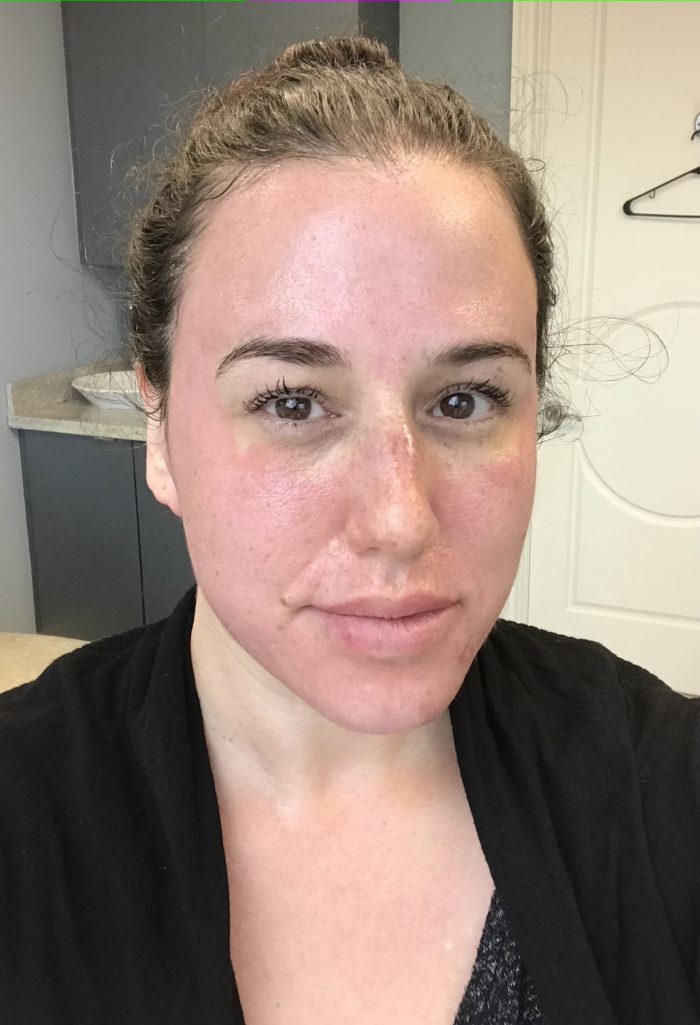
Related: The Return of the CO2: Why These Next-Level Lasers are a Perfect Procedure for Fall
The recovery
My face was very red following the treatment—not a surprise, since Dr. Tomar told me it would look like I had a sunburn. I had only a little swelling though. “Most patients don’t have too much swelling. Some patients who have had facelifts and other facial procedures, they tend to swell up around the eyes,” she explained. And after the redness? “It almost looks like a tan after a day or two, then it feels like sandpaper. Slowly, your skin is going to start peeling over the course of the next five to seven days.”
In addition to cautioning me against picking at the rough texture—flaking it off prematurely can cause scarring—Dr. Tomar advised me to stay out of the sun and, of course, use a gentle yet high-SPF sunscreen if I must go outside. For days when the sun isn’t a concern, she advised me to use a rich moisturizer made for post-procedure skin.
I know that some folks who’ve gotten Fraxel prefer to lie low during the first few days after treatment, but after taking one day off from the gym, I swallowed my pride and returned, with what I thought was a very toasted-looking face. My trainer, however, said, “Did you get a tan? You look good.” And while I was warned to not touch my skin much, I just had to let him lightly drag a finger across my forehead so he could feel the sandpaper texture I’d been promised.
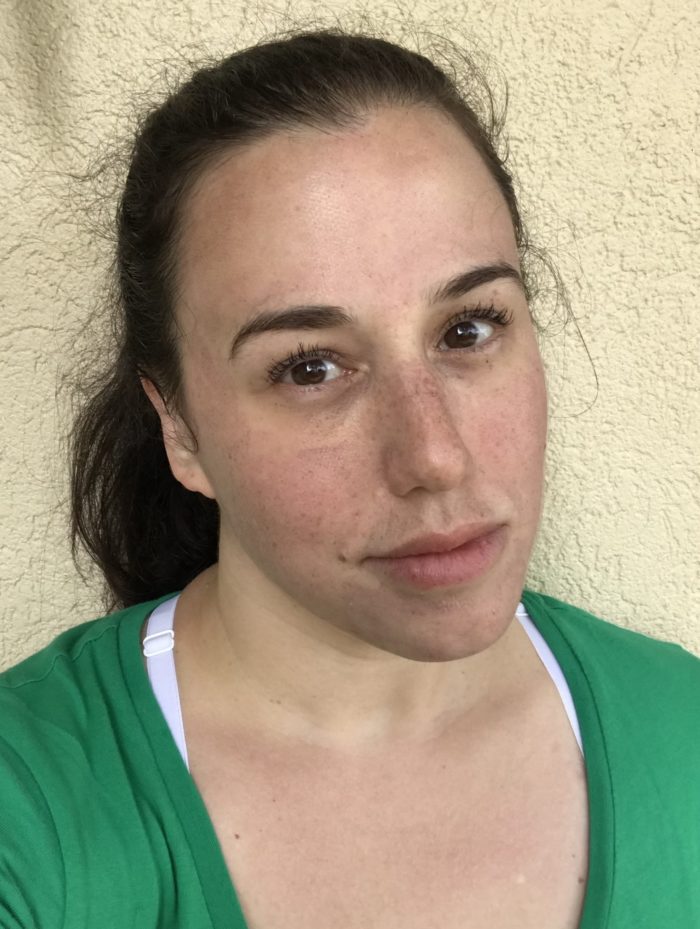
Even though onlookers seemed to think I’d just gotten a tan, I felt more comfortable wearing makeup, which Dr. Tomar OK’d. On day four, with sandpaper skin in full effect, I wore full-coverage foundation in a shade slightly darker than my usual and found that I looked like anyone else wearing makeup—there were no obvious signs that under the foundation was basically a thin-crust pizza without the cheese and sauce.
The verdict
About a week later, my roughness had fully resolved. I was curious—cynical, even—about whether I’d see a difference, considering I was going into Fraxel more as a preventive measure than a corrective one. However, I was thrilled to find that my skin really did look noticeably renewed. It looked smoother, brighter, and firmer and best of all, the spots on my cheeks that had started bothering me were significantly faded; some were even completely gone.
In this final photo, I’m wearing makeup—eyeliner, mascara, brow pencil, and a little bit of sheer lipstick—but no foundation. In fact, I’ve hardly touched the stuff since fully healing from my Fraxel treatment, and that’s not something I expected to be able to say before going in. I fully expect to not look 41 when I turn 41 next year, and with Fraxel helping to nullify the collagen loss I’ll increasingly experience as I continue aging, you can bet I’ll be back for another round shortly after my birthday … and each birthday thereafter.







